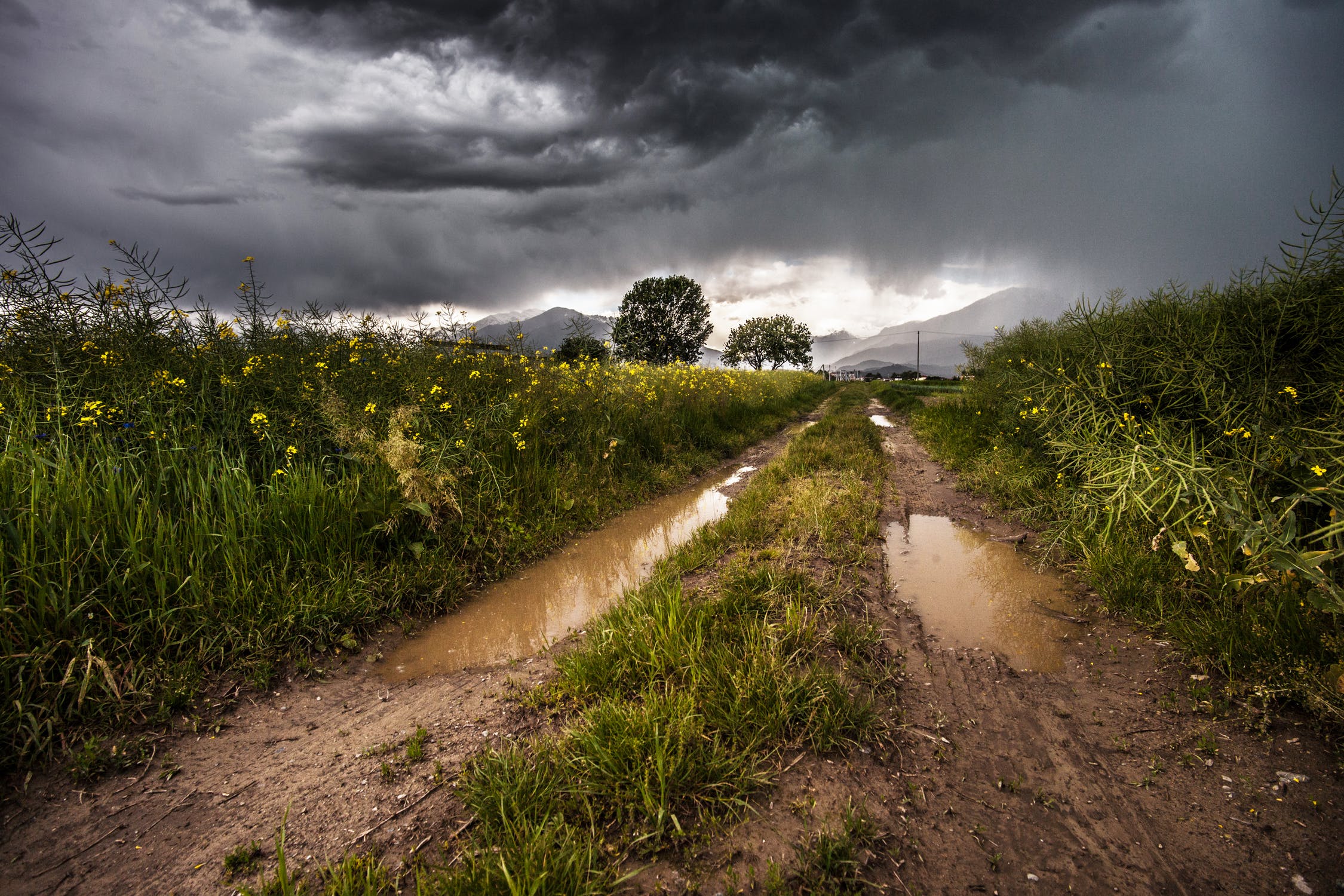
Some people can smell rain, and scientists now know why.
Ever notice the air outside has a distinct smell after a rain storm? Some people are more sensitive than others with this phenomena known as petrichor. Petrichor is the earthy scent produced when rain water interacts with soil; it’s constructed from the Greek “petra” meaning “stone” and “ichor”, the fluid that flows in the veins of the gods in Greek mythology. In 2015, scientists from the Massachusetts Institute of Technology (MIT) used high-speed cameras to record how the scent moves into the air., testing roughly 600 experiments across 28 different surfaces to see what releases a scent and how that scent travels. Their experiment showcased that when a raindrop lands on a porous surface, air from the pores forms small bubbles, which float to the surface and release aerosols. These floating aerosols carry the scent into the air, bringing bacteria and viruses up from the soil as well. Raindrops that move at a slower rate tend to produce more aerosols than a heavy rain. This is why petrichor is especially noticeable on light rain days, but not so much after soaking storms.
A common ingredient in this petrichor aerosols is Geosmin. An organic compound produced by certain bacteria, geosmin provides a distinct “Earthy” flavor and aroma. Like the word petrichor, geosmin also has Greek roots, coming from Greek words that mean “earth” and “smell.” Geosmin is also present in other items that give them a distinct “earthy” smell like beer and bread. or vegetables like turnips and beets. Humans are generally very sensitive to geosmin; the human nose can usually detect it at 5-10 parts per trillion, which is the equivalent of one drop of water in a full Olympic-sized swimming pool or a teaspoon of water from 200 Olympic sized pools.
Other factors can also influence the smell rain produces. Different plants produce a particular mix of oils during dry weather, designed to inhibit growth and minimise consumption of water as a built-in preserver of life. After a dry period, these plant oils will collect in soil and rocks. When rain eventually disturbed these oils, they’re released into the air with the rest of the petrichor. Electrical charges involved in lightning can also create a unique smelling rain. The smell before a thunderstorm is the result of an abundance of electrical charge present in the atmosphere. This excess electrical charge causes the splitting of some oxygen moules in the air into individual oxygen atoms. These oxygen atoms then combine with other oxygen molecules in the atmosphere to form ozone, known as O3. Ozone has a distinct, sharp smell. While this chemical process of splitting and joining oxygen molecules is done high in the atmosphere, strong winds around storms can help bring them closer to the surface in and ahead of storms, giving humans the chance to smell the distinct smell there.
The petrichor, geosmin, and ozone will create different aroma mixes in the air, giving each rain event a distinct smell. Scientists believe that humans evolved over time to better pick up these scents, bringing them closer to areas of fresh rain water for survival. While humans usually don’t need fresh rain to survive in modern times, the ancient trait remains with the body.